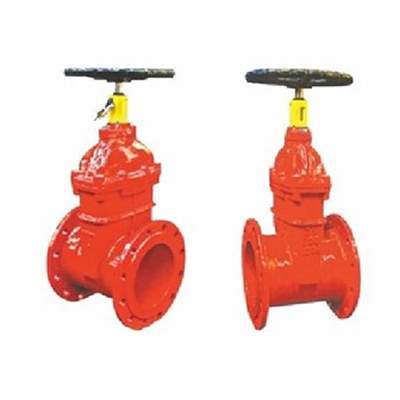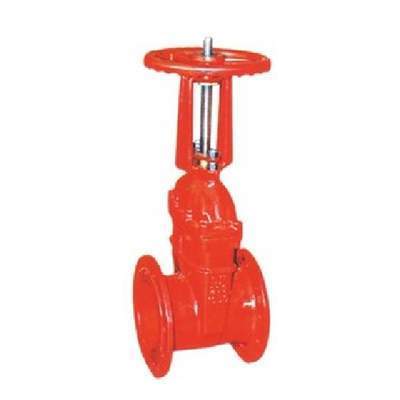Welcome to My Blog!
Before we dive into the content, if you’re interested in our products or have any questions, please feel free to visit our Contact Us page on the website. Our team is ready to assist you with inquiries, orders, or any support you may need.
Now, let’s get started on our journey together. I hope you find the content here insightful, engaging, and valuable.
Fire fighting valves are essential components in any fire protection system. They are designed to regulate the flow of water, gas, or other firefighting agents to control and suppress fires effectively. In this comprehensive guide, we’ll cover the different fire fighting valves types, their functions, applications, and how to choose the right one for your fire protection system.
What Are Fire Fighting Valves?

Understanding Fire Fighting Valves in Fire Protection Systems
Fire fighting valves types refer to various types of valves used in fire suppression and protection systems to control the flow of extinguishing agents. These valves can be automatic or manual, and they play a crucial role in ensuring the fire protection system operates efficiently during an emergency. From controlling water flow in sprinkler systems to regulating the release of fire suppression agents in gas-based systems, fire fighting valves ensure that a building or facility is protected from fire hazards.
The Role of Fire Fighting Valves in Preventing Fire Spread
The main role of fire fighting valves types is to help prevent the spread of fire by controlling the distribution of water or other fire extinguishing agents. For instance, alarm valves can trigger an alarm when water flow is detected, indicating a fire emergency. By stopping or redirecting the flow of agents, these valves contain fires to specific areas and prevent widespread damage.
Types of Fire Fighting Valves: An Overview
Ball Valves: Features and Applications
Ball valves are one of the most commonly used fire fighting valves types. These valves are simple yet highly effective, using a spherical ball with a hole through it to control the flow of water or other agents. Ball valves are ideal for systems that require high pressure and are often used in residential and commercial fire protection systems.
Butterfly Valves: How They Function in Fire Protection Systems
Another popular type of fire fighting valves types is the butterfly valve. These valves operate by rotating a disc to regulate water flow. Butterfly valves are often chosen for their compact design and low maintenance. They are widely used in large-scale systems, such as those found in industrial or commercial buildings, where high-flow control is necessary.
Gate Valves: Advantages and Use Cases
Gate valves are typically used in larger fire fighting systems due to their ability to provide a full flow of water when open. This makes them ideal for controlling water flow in large-scale industrial fire suppression systems. When selecting gate valves, it is essential to ensure they are durable enough to handle high-pressure environments.
Check Valves: Preventing Backflow in Fire Systems
Fire fighting valves types like check valves are vital for maintaining system integrity. These valves prevent backflow, ensuring that water or suppression agents do not flow in the wrong direction. In fire protection systems, check valves help maintain a one-way flow, preventing contamination or damage to the water supply.
Pressure Relief Valves: Ensuring System Safety
Pressure relief valves are designed to protect your fire protection system from excess pressure. These valves will automatically release pressure if it exceeds a set limit, preventing equipment damage and ensuring safe and efficient operation. Pressure relief valves are crucial in fire suppression systems, where consistent pressure is needed for effective fire control.
Alarm Valves: Early Fire Detection and Response
Alarm valves are among the most critical fire fighting valves types in modern fire protection systems. These valves are integrated with fire detection systems and trigger alarms when they detect changes in water flow or pressure. Alarm valves provide early notification, allowing personnel to respond promptly and limit fire damage.
How Do Fire Fighting Valves Work?
The Mechanism of Fire Fighting Valves
The function of fire fighting valves types is centered around controlling the flow of water, foam, or other extinguishing agents in a fire protection system. Automatic fire fighting valves operate based on sensors that detect smoke, heat, or changes in pressure. When these sensors activate, the valve will automatically shut off or redirect the flow of water, ensuring fire suppression systems operate efficiently during a fire emergency.
Integration of Fire Valves in Sprinkler and Suppression Systems
Different fire fighting valves types are integrated into sprinkler and suppression systems. Sprinkler systems rely on valves like ball valves or gate valves to control water flow, while gas-based suppression systems use more specialized valves to regulate the release of gas or foam. These valves help maintain the system’s pressure and ensure that the right amount of agent is deployed to control the fire.
Differences Between Manual and Automatic Fire Valves
The key difference between manual and automatic fire fighting valves types lies in their operation. Manual valves require an operator to intervene, while automatic valves trigger responses automatically when they detect heat or smoke. Automatic valves are more commonly used in modern fire protection systems, as they ensure an immediate and efficient response without the need for human intervention.
How to Choose the Right Type of Fire Fighting Valve
Key Factors in Selecting Fire Fighting Valves
When choosing the right fire fighting valves types for your system, there are several factors to consider:
- System Requirements: Consider the specific needs of your fire protection system, whether residential, commercial, or industrial. Each system may require different valve types based on its complexity.
- Pressure Rating and Flow Requirements: Make sure to select a valve that matches the pressure rating and flow requirements of your fire protection system.
- Material and Durability: Choose valves made from materials that can withstand high pressure and resist corrosion, such as stainless steel or bronze.
Considerations for Specific Applications
For commercial buildings, butterfly valves are often chosen due to their space-saving design and ability to handle large volumes of water. In contrast, check valves are often used in industrial systems to ensure a one-way flow of water or fire suppression agents, especially in hazardous environments.
Common Fire Fighting Valve Installation and Maintenance Questions
How Are Fire Fighting Valves Installed in a Fire Protection System?
The installation of fire fighting valves types should always be performed by trained professionals to ensure the system operates efficiently during an emergency. The installation process typically involves connecting the valve to the water or suppression system and conducting thorough testing to ensure the valve functions as expected.
Best Practices for Maintaining Fire Fighting Valves
To keep your fire fighting valves in optimal working condition, regular maintenance is essential. This includes periodic checks for leaks, corrosion, and testing the valve’s ability to open and close under pressure. Proper maintenance of fire fighting valves types helps ensure the safety of the entire fire protection system.
How Often Should Fire Fighting Valves Be Tested?
Fire fighting valves types should be tested at least once a year, with more frequent testing required depending on local regulations. Annual testing ensures that the valves operate correctly when needed, especially in emergency situations.
Fire Fighting Valve Standards and Regulations
International Standards for Fire Fighting Valves (e.g., UL, FM, NFPA)
It is essential that fire fighting valves types comply with established standards and regulations. For example, NFPA 80 and UL 864 provide guidelines for the performance and installation of fire fighting valves. Compliance with these standards ensures the safety and reliability of fire protection systems.
Cost Considerations and Buying Fire Fighting Valves

Factors Affecting Fire Fighting Valve Costs
The cost of fire fighting valves types depends on several factors, including the complexity of the valve, the materials used, and the system’s requirements. Basic ball valves are generally more affordable, while specialized alarm valves or pressure relief valves can be more expensive due to their advanced features and functionality.
Where to Buy Fire Fighting Valves
Fire fighting valves can be purchased from specialized suppliers, manufacturers, or online platforms. It is important to ensure that the valves meet the required standards and come with a warranty or certification for quality assurance.
Conclusion
Choosing the right fire fighting valves types is crucial for the effectiveness of your fire protection system. Consider factors such as the system’s requirements, valve functionality, and durability when making your decision. Whether you are selecting gate valves for a large industrial facility or ball valves for a residential building, make sure your system is tailored to meet your needs.
FAQ
What are the different types of fire fighting valves?
The main fire fighting valves types include ball valves, butterfly valves, gate valves, check valves, pressure relief valves, and alarm valves. Each serves a unique purpose in controlling the flow of water or extinguishing agents in fire protection systems.
How do fire fighting valves work?
Fire fighting valves control the flow of water or other extinguishing agents in a fire protection system. Automatic valves operate when sensors detect heat or smoke, while manual valves require human intervention. They help to regulate water flow in sprinkler systems and suppress the spread of fire.
Why are check valves important in fire fighting systems?
Check valves are crucial for preventing backflow in fire protection systems. They ensure that water or suppression agents flow in only one direction, preventing contamination or damage to the system’s water supply and ensuring consistent flow during a fire emergency.
What is the purpose of alarm valves in fire protection systems?
Alarm valves are used in fire protection systems to trigger alarms when they detect changes in water flow or pressure. They are integral in sprinkler systems and gas suppression systems, alerting personnel to a potential fire or system malfunction.
How do I choose the right fire fighting valve for my system?
The choice of fire fighting valves types depends on factors like the size and type of your system, required pressure, flow rate, and material durability. For large systems, you might opt for gate or butterfly valves, while smaller systems may use ball or check valves for simplicity and cost-effectiveness.
Are you ready to optimize your fire protection system with the right fire fighting valves types? Whether you need advice on choosing the best valve for your system or require high-quality valves for installation, we’re here to help. Contact us today to discuss your fire safety needs or browse our range of top-rated fire fighting valves to ensure your building is fully protected. Don’t wait until it’s too late – safeguard your property with reliable and efficient fire protection solutions!
